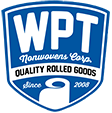Traditional filtration materials, often made from synthetic polymers and other non-biodegradable components, have posed significant challenges in waste management and environmental sustainability. In response to this, researchers and engineers have turned their attention to biodegradable alternatives like PLA fibers that maintain high filtration efficiency while reducing the ecological footprint.
Understanding PLA Fiber Nonwovens
Polylactic acid, or PLA, is a biodegradable and bioactive thermoplastic developed from natura sources such as corn starch and sugar cane. PLA has mechanical properties that are similar to traditional petroleum-based plastics but with the added benefit of being compostable under industrial conditions. Nonwoven fabrics made from PLA fibers offer exceptional filtration capabilities while being inherently sustainable.Applications Across Industries
Healthcare and Personal Protection
PLA fiber nonwovens are gaining traction in the healthcare sector for manufacturing surgical masks, gowns, and other protective equipment. These materials provide effective filtration against airborne particles while offering biodegradability, making them an ideal choice for medical settings concerned about both efficacy and environmental impact.Environmental Remediation
In environmental applications, such as water and air filtration systems, PLA fiber nonwovens play a vital role in removing contaminants. Whether used in wastewater treatment plants or air purification systems, these biodegradable filters help mitigate pollution while minimizing long-term ecological harm.Consumer Goods
From household air purifiers to vacuum cleaner filters, PLA fiber nonwovens are finding their way into various consumer products. As consumers prioritize sustainability, manufacturers are responding by incorporating biodegradable materials into everyday items, reducing reliance on non-recyclable plastics.Industrial Filtration
Industries ranging from automotive to manufacturing rely on filtration systems for various processes. PLA fiber nonwovens offer a sustainable alternative for industrial filtration applications, ensuring efficient removal of contaminants without contributing to environmental degradation.Advantages of PLA Fiber Nonwovens
- Biodegradability – PLA fiber nonwovens decompose naturally, reducing landfill waste and environmental pollution.
- Renewable Sourcing – PLA is derived from renewable resources, diminishing dependence on fossil fuels and contributing to a more sustainable supply chain.
- Efficient Filtration – These materials provide effective filtration while meeting industry standards for performance while reducing environmental impact.
- Versatility – PLA fiber nonwovens can be customized to meet specific filtration requirements, making them suitable for a wide range of applications.
Challenges and Future Outlook
While PLA fiber nonwovens offer significant benefits, challenges remain, particularly concerning scalability and cost-effectiveness. As demand grows and technology advances, overcoming these obstacles will be crucial in realizing the full potential of biodegradable filtration materials.Looking ahead, continued research and development efforts are expected to enhance the performance and affordability of PLA fiber nonwovens, driving their widespread adoption across industries. PLA nonwovens are expected to play a vital role in promoting sustainable practices and accelerating the transition towards a circular economy.
Contact your experienced and capable nonwovens team, WPT Nonwovens, to learn more.
